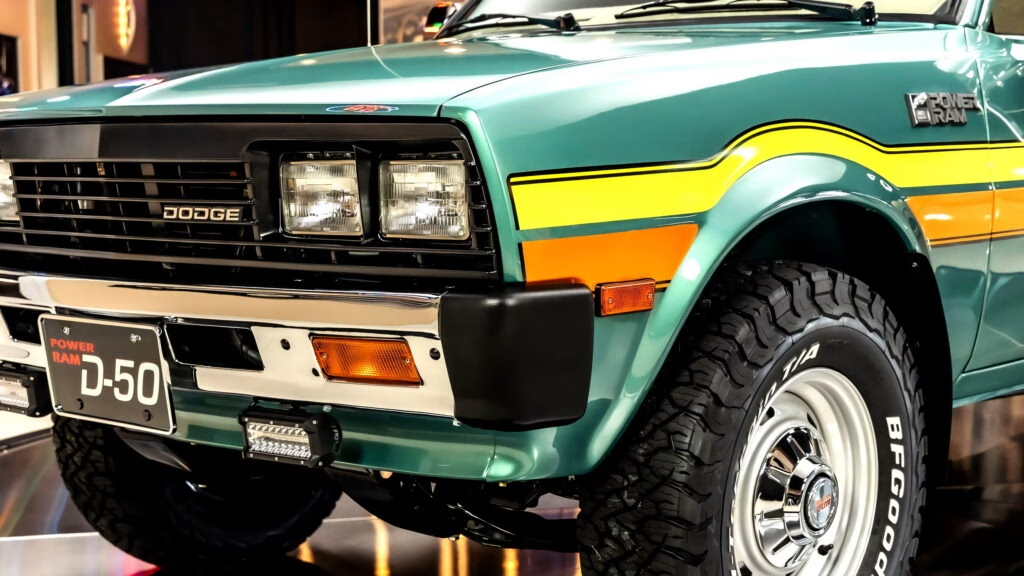Why Are Classic Compact Pickups Like the Dodge Ram 50 Suddenly Getting So Much Attention?
You might’ve noticed a growing buzz around classic compact pickups lately, especially ones you haven’t seen on the road in decades. Case in point: a painstakingly restored 1986 Dodge Ram 50 Sport 4×4 just sold after turning heads with its blend of nostalgia and subtle upgrades. But what’s fueling this renewed interest in trucks that were once considered disposable workhorses?
It comes down to a mix of rarity, character, and a touch of rebellion against today’s oversized, tech-laden pickups. The Ram 50, for example, was never a mainstream icon. It was a Dodge-badged Mitsubishi L200—lightweight, simple, and built for utility, not flash. Most were driven hard and eventually scrapped, so seeing one not just survive but thrive in better-than-new condition is a bit like spotting a unicorn at your local gas station.
What Makes the 1986 Dodge Ram 50 Sport Stand Out From the Crowd?
At first glance, this Ram 50 Sport looks like a time capsule: jade-green paint, bold orange and yellow graphics, and a stance that whispers “factory fresh.” But peek a little closer and you’ll spot the thoughtful upgrades that set this build apart. The 2.6-liter inline-four, rated at 109 horsepower, breathes a bit easier thanks to some subtle tuning. The wood-lined bed, beefy roll bar, and leather-wrapped three-spoke steering wheel add a custom touch without screaming for attention.
It’s the kind of restoration that respects the original DNA but isn’t afraid to add a personal twist. According to Vanguard Motor Sales, which listed the truck for sale, the attention to detail rivals that of high-end muscle car builds. And let’s be real—when was the last time you saw a compact pickup with this much curb appeal?
How Did the Ram 50 Fit Into the Pickup Landscape of the 1980s?
Back in the late 1970s and through the 1980s, the Ram name wasn’t reserved for burly, full-size trucks. Dodge offered the D50 (later renamed Ram 50) as a practical, affordable answer to rivals like the Ford Courier and Toyota Pickup. Underneath, it was all Mitsubishi engineering—rugged, reliable, and surprisingly capable with available all-wheel drive (the Power Ram variant).
By 1986, the Ram 50 was in its final year of the first generation, just before Dodge introduced the larger Dakota. Yet, the Ram 50 stuck around in various forms until the mid-1990s, quietly serving contractors, small business owners, and anyone who needed a no-nonsense hauler.
How Much Does It Really Cost to Build a Dream Truck Like This?
Here’s where things get interesting. Restoring a forgotten classic to this level isn’t for the faint of heart—or wallet. While the exact build cost for this Ram 50 isn’t public, Vanguard Motor Sales had it listed for $59,900. That’s a hefty sum for a truck that originally sold for a fraction of that price. But for the right buyer, it’s not about investment returns. It’s about passion, nostalgia, and the thrill of owning something truly unique.
Industry data backs this up: Hagerty’s 2024 Price Guide shows values for well-restored compact pickups have climbed by as much as 40% over the past five years, especially for rare models and factory-correct restorations. The market is catching on—these trucks are no longer just cheap beaters; they’re rolling pieces of history.
Why Do Enthusiasts Sink So Much Time and Money Into Oddball Builds?
Let’s be honest. If you suddenly won the lottery, would you run out and buy the latest supercar? Or would you commission a wild, one-off project that makes people scratch their heads and smile? For many enthusiasts, the real joy comes from resurrecting something overlooked—a sleeper Honda CR-V with a Type R engine swap, or a Ram 50 that looks stock but hides clever upgrades.
It’s not about resale value or bragging rights. It’s about the story, the process, and the satisfaction of seeing jaws drop at the next cars and coffee. As one restorer put it in a recent interview with Hemmings, “You can’t put a price on the feeling you get when someone says, ‘I haven’t seen one of those in years!’”
What Should You Look for If You’re Tempted to Start Your Own Restoration?
Thinking about diving into a project like this yourself? Start with a clear vision. Decide whether you want a faithful restoration, a resto-mod, or something completely off-the-wall. Pay close attention to parts availability—while Japanese pickups of this era are generally reliable, sourcing trim pieces or drivetrain components can be a challenge.
Experts recommend joining online forums and owner’s groups, where you’ll find a wealth of advice and maybe even a few hard-to-find parts. And don’t underestimate the value of a good shop manual. The best builds often come from a mix of patience, resourcefulness, and a willingness to get your hands dirty.
The big takeaway? Restoring a classic pickup like the Dodge Ram 50 isn’t about perfection—it’s about smarter adjustments. Start with one change this week, and you’ll likely spot the difference by month’s end.

